The Japanese are still one of the worst people in the world.Their nutritional review shows why this is how we can benefit from it.
If we want to lose weight, we often start with strict diets that are subsequently not met in a few days or weeks, following all strict rules.In fact, it's so simple: let's look at the worst people - in Japan.
There they treat food with respect and enjoy it.
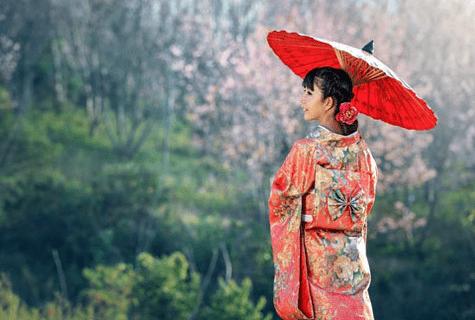
Japanese diet
Trip to Japan.The choice of products
A lotsquirrel: The main ingredients of the Japanese diet are fish, rice and vegetables.As well as soy and fruits.
After a closer test it is as
- rich in protein,
- low -fat
- And gluten -free diet.
- FishContains a lot of useful omega-3 fatty acids.
- VegetablesThey contain the necessary vitamins and fill the stomach well.
- Don't be afraid of carbohydrates: at first glance, it seems that with the ubiquitous carbohydrate phobia in Japan you eat an incredible amount of white rice.Obviously, this is not particularly harmful to the disadvantages.RiceIt does not contain gluten and contains low fat.
- Soupand fermented dairy products.That they almost don't eat in JapandairyIn the area
- AlbeitcerealsSometimes they are used, for example, in the form of pasta, they are not the main food.
- MeatThey eat much less than fish.
- But the Japanese likeFermented productsLike Miso or Kimchi.They contain probiotics that are useful for the gut.This, in turn, plays an important role in losing weight.And another thing we can adopt from the Japanese: they even eat a lot of soups for breakfast.
Trip to Japan.Cooking methods
In Japan, food is mainly steamed, stewed or grilled.All of these preparations are done almost without fat.
Of course, there is also a fried food, such as a popular pace, but then it is used as a side dish in small quantities.Food presentation and design are also important in Japan.Asian products are useful, delicious and promote weight loss.
Japanese to consciously eat
In Japan, food is considered an independent activity you need to focus on.The food should be eaten slowly and consciously and enjoy.Therefore, it is traditionally not eating "by the way" or "go".That is, not during walking, no subway, no work or watching TV.Of course, this is not forbidden, but actually diet, especially if you lose weight, you should consciously.There is a feeling of satiety when using this food absorption method.Because working days and school days in Japan can be very long, it also means that food has longer breaks.AlsoportionsLess in Japan.You will not see a plate that is overloaded with food.
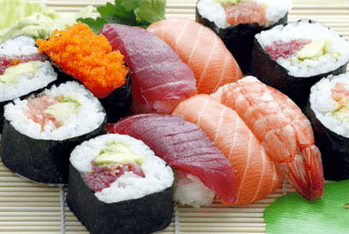
Weight comes with fast food
Slow food (slow food)Japan trend.If you imitate it, you can deliberately lose weight rather than starving.However, it should be noted that in Japan, more and more appears from the west of new trends: for example, fast food.Previous habits in food disappear ...
There are consequences: the Japanese also recover from traditional food!Nonetheless, the country also struggled with it, Japan took decisive measures against the causes of being overweight in 2009.Medical examinations are regularly carried out in all municipalities and large companies.Businesses have to pay more for medical insurance if their employees are overweight or high blood pressure, lipid high blood or high blood sugar.Given such measures, many Japanese prefer to return to Miso-Supa with fish, not toast in the morning.
How long does the Japanese diet last?
Time and possible weight loss may vary.The Japanese diet should be followed for at least four weeks.This time is sufficient to stimulate fat burning.There are people who have lost3till8Kilograms in four weeks with a diet.The result can be increased even more if you start a sports program.
- Many vegetables and fiber are used during the diet.Diet plan provides1,200 caloriesthe day.
- It is mainly proposed by rice, fish and vegetables.
- Drinks: lots of green tea and water.
- Take care of fresh cooking - without ready -made products.
- Take sports or train for endurance.
- Plan enough time for cooking.
Talk to your doctor.- All dietary changes can cause ailments.The reasons are mainly mentally and low in calorie consumption.Talk to your doctor if the symptoms are maintained.
The benefits of a Japanese diet
Japanese diet- This is a healthy mixed diet.Much attention is paid to fresh products and balanced food.
Disadvantages of Japanese diet
- Low calorie intake can cause a feeling of hunger and malignancy.Overweight people can have a total calorie intake even too low.
- Preparing fresh food in the long run can be boring for those who are used to feeding fast food.
- Spontaneous visits to the cafe or restaurants are faced with a choice.
- The diet requires a lot of endurance.
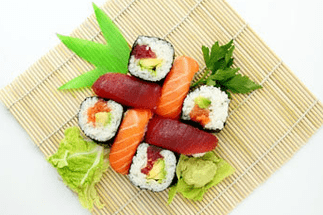
But those who successfully complete the Japanese diet will be rewarded with more overweight.
If you want to see great success, create a sports program.Be sure to consume enough protein.Otherwise, you cannot increase muscle mass.At worst, you will lose your muscles.Evil sports and other large loads should be avoided.
Japanese diet.Menu
All food should be fresh.The dishes are beautifully cooked, you can play with flowers.Food and food enjoying (slow food absorption) are also very important.
Breakfast
- 1 mandarin
- 1 cup Miso.This typical Japanese soup gives a lot of energy, but it is low in fat.By the way, it consists of fish broth, tofu, algae, miso (flavored soy paste) and green onions.Recipe below!
- 1 cup of green tea
Dinner
- 1 ground plate (raw fish with rice) with soy sauce
- a glass of noodle with mushrooms
- 1 apple
- A cup of green tea
Dinner
- 1 sashimi (other fish dish), soy sauce and basabi portion (be cautious, this paste made of water is very acute)
- 1 cup whole grain rice
- 1 orange
- A cup of green tea
In addition, exercises (walking or cycling), as well as the pleasure of simple, small things are recommended.
And now for the "old good times" - let's go during travel, in 1975
The Japanese are one of the healthiest people in the world with the highest lasting life expectancy, during which they are still harmful to the example of nutrition.Currently, Nippon.com has published a study where it justifies Japanese good health reasons with their diet.Nutritionists have studied Japanese food habits for more than half a century.Result:In 1975, the highest ranked Japanese culinary habits.
Why was the Japanese diet of 1975 considered a diet model
For many decades, the Western world has been influenced by the Japanese culture, especially the habits of the Western power distributed in the country, as well as diseases such as atherosclerosis and diabetes.A study in which Japanese diet mice were tested for decades - 2005, 1990, 1975 and 1960.
Result:The mice had the best health condition with a diet plan in Japan since 1975.This mouse group had the lowest risk of diabetes and healthy liver.
Reason:The average Japanese diet plan this year was a large amount of vegetables, fruits, algae and seafood.In addition, in 1975, the diet was dominated by a variety of fermented spice methods and a larger range of herbs.In addition, the consumption of juices and sweet soft drinks at that time was not as common in Japan as today - both drinks are considered harmful to health.
After a 48 -week period, the researchers found that the mice operated by the 1975 Japanese diet were older and had better memory than the mice that observed the 2005 diet.
But is it possible to pass these results to humans?A study conducted by the Tokhoki University Study Committee for Sendai, Japan, “Research Ethics Committee“ Fits Tōoku uni, Sendai, proved that the 1975 diet has the same beneficial effect on people.And the group of participants, who followed the 1975 diet within 28 days, outperformed the figures of the people who followed the food plan of 2005.In the first group, cholesterol was lower as well as the risk of diabetes.In combination with one hour of training three times a week, the year 1975 also reduced stress and increased endurance in a group of participants aged 20 to 30 years.In general, a Japanese diet can also help lower lipid levels in the blood and visceral fat, which are considered harmful to health due to its metabolism activity.
Summarizing we can say thatJapanese 1975 PowerCompared to modern nutrition in Japan - and characteristic of the West, food habits are more useful nowadays in many respects.This healthiest lifestyle and diet reduce the risk of diabetes, the risk of long -term cholesterol, reduces lipids and visceral fats, and weight loss is a positive side effect.
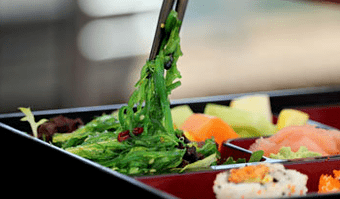
The 1975 diet, along with regular physical exercises, contributes to weight loss.
- Diversity:The daily menu usually consists of many small different dishes served with soup and rice - instead of one big main dish.
- Preparation:The most popular three types of dishes prepared in 1975 were cooked, steamed or raw, also grilled.The heat and roasting of freedom were used less frequently.This type of preparation is the fact that the most important dietary values are lost in the heat.For example, oily fish, such as cod, contain important omega-3 fatty acids.After baking, fish contain only one -third of the original fat compared to raw fish such as sashim.
- Ingredients:The 1975 diet is particularly rich in soy products, seafood, tubers and green and yellow vegetables (including rnicons), fruits, algae, mushrooms and green tea.Eggs, dairy products and meat were also consumed in 1975, but only in moderate quantities.
- Spices:Salt and sugar are used to taste soy sauce, vinegar and sake, fermented spices and fish broth.
Soup miso- This is Japanese national food, quickly preparing and very aromatic.The main recipe has very few ingredients - you can enrich it as you want.Miso-Sup often eats breakfast in Japan, but also as snacks or side dishes.With filling, soup becomes the main meal.
As the basis of the soup you will only need two ingredients:
Mizopasta:This spicy paste consists of soybeans and - depending on the variety of cereals, such as rice or barley.The ingredients are salted and fermented in barrels with the help of Coji.There are light and dark, sweet and sharp miso paste.Thus, the choice of diversity has a great influence on the taste of miso soup.Mizopasta is considered very useful because it contains probiotic milk -shaking bacteria that develop during fermentation.Dasha:Japanese fish broth is made from seaweed battle battle and dried bonito flakes (mackerel type or tuna: "Katsuo-Bushi"-"Katsuo-Busi").If you want to make Miso vegetarian soup, you can use dried shitaks instead of bonito flakes and possibly dumb or enoki mushrooms.
Miso Soup: Basic recipe
For four small ports of miso soup you will need the following ingredients:
- 750 milliliters dasha
- about two or three tablespoons of miso-mail
Use the selected Miso-Poste: In addition to soy shiro-miso, it also contains rice and has a pretty soft and sweet taste.Miso's darkest varieties like Genmai or Hatcho Miso are more spicy.
How to cook miso soup
-
Heat dasha broth - but not boil.
-
Skip the miso-pa sieve and mix well with the broth.First, use only part of the quantity as the paste Miso has a very salty taste.Try the soup and then add more miso paste if necessary.
-
Add the components of the selected choice to the wrong supine before serving.Serve the finished soup in bowls.By the way, in Japan, soup is eaten with sticks for food, and then the broth is drunk from the mug.
Miso soup recipe: additives and spices
You can make different ingredients for the soup.In Japan, much attention is paid to the fact that the ingredients are cut evenly - so the finished soup looks very beautiful.Here are some examples to enrich your soup Miso:
- Cooked rice or paste (eg buckwheat dog noodles)
- Tofu cut with cubes
- Onions or green onions cut into thin rings
- Mushrooms, finely chopped
- Kohlrabi, finely chop
- Snow
- Leaf spinach, park choi or mangolds
- Fried vegetables such as broccoli, pepper or carrots
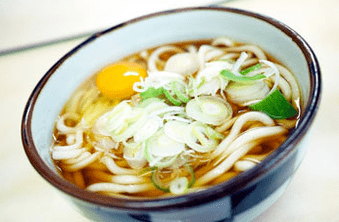
Although Miso soup itself is very spicy, it can be tasted with several spices.For example:
- soy sauce
- A bit like a lime
- Japanese Vostershire sauce
- A few drops of sesame oil
- Small ginger and / or chili pepper powder.
- You can also cut fresh ginger and / or pepper into thin slices and leave in the soup.
Tip:For many ingredients you will have to go to the Asian store, but in the regional markets you can buy fresh onions, mushrooms, kohlrabi and co.
Tofu and other soy products are now produced in other countries.
Japaneseto eat:
- rice, fish (raw and cooked), vegetables, all and algae
- Small portions
- Different foods (up to 30 different per day)
- For breakfast soup, fish, rice, vegetables
- Fresh seasonally raw products
almost do not eat desserts do not eat bread
Drink mainly green tea
Don't bake in oil, use only a little vegetable oil for baking
They go a lot and go on a bike
The three best products
Rice/fish (algae)/soy (tofu)
Drink: Green tea
And another Japanese secret
Do you want to become thinner at the waist 12 cm?- If so, do the following breathing exercises!
Important!
- Do every day!
- Do before breakfast!
- Never hurry!
- The legs put each other at a comfortable distance.The roads, of course, "look" forward.
- Move your body weight to the back leg, straighten the front.
- Inhale for 3 seconds.
- Exhale for 7 seconds.Relax your muscles.RIP hands.
The exercise works at the beginning of 3 minutes, then increase the time to 10 minutes.














































































